20 Best Giant Chicken Breeds ( For Meat + Egg Production)
As a poultry enthusiast or farmer, you may have faced the challenge of selecting the right chicken breeds for your coop. Balancing factors such as climate adaptation, egg-laying abilities, meat yield, health considerations, and even temperament can seem like an overwhelming task.
Plus, there’s the question of space—how can you optimize the amount of poultry you can accommodate without compromising their well-being and productivity? Giant chicken breeds might be your answer.
But with so many large chicken breeds out there, which ones will suit your specific needs the best? This comprehensive guide will simplify your choice and offer detailed insights into the 20 best giant chicken breeds for your poultry collection.
Table of Contents
Benefits of Raising Giant Chicken Breeds
Raising large chicken breeds offers several benefits:
- Due to their size, these chicken breeds produce more meat than standard-sized or bantam chickens. This can be particularly beneficial if you are raising chickens for meat production.
- These chicken breeds are hardy and adaptable to various climates and living conditions. This makes them a practical choice for many different environments.
- Despite their large size, they are still gentle and docile temperament. This makes them easier to handle and good candidates for pets or show birds.
- While not all giant chicken breeds are prolific egg layers, some, like the Jersey Giant, lay a decent amount of eggs. If you want in both meat and egg production, certain giant breeds can deliver on both fronts.
- Giant breeds are often quite robust and live longer than smaller breeds. This makes them a good investment if you want a long-term addition to your flock.
- Their imposing size can act as a deterrent to smaller predators, providing a degree of natural protection for your flock.
- Many of the larger chicken breeds are excellent foragers. This ability can help reduce feed costs if your chickens have access to good-quality pasture.
- Finally, these chicken breeds can be quite striking visually. The sheer size and unique characteristics of these breeds can add variety and interest to your flock.
Read also: 10 Essential Tips for Raising Meat Chickens
Detailed Profiles of the 20 Best Giant Chicken Breeds
1. Jersey Giant

- Origin and History: Developed in the United States for the purpose of replacing the turkey, the Jersey Giant is the largest chicken breed.
- Physical Characteristics: They have a sturdy body, black feathers and will grow to a substantial weight.
- Temperament and Behavior: Despite their size, they are gentle and calm.
- Egg Laying Capability: Moderate layer with approximately 150-200 brown eggs annually.
- Health and Care Considerations: Jersey Giants are generally hardy but need plenty of space due to their size.
- Best Practices for Raising This Breed: Regular feeding with a balanced diet and plenty of room to roam will keep them healthy.
2. Orpington

- Origin and History: Orpingtons, named after the town of Orpington, UK, are a classic breed recognized for their utility and beauty.
- Physical Characteristics: Orpingtons are known for their large size and dense feathering. They are popular in the ‘Buff’ variety, but the Lavender Orpington is also gaining popularity. Hens generally weigh around 7 lb (3.2 kg) and roosters around 9 lb (4 kg). Their bantam counterparts are lighter.
- Temperament and Behavior: Orpingtons are gentle giant chicken breeds. They are huge birds with kind and pleasant personalities.
- Egg Laying Capability: They are excellent egg layers, producing about three to four large light brown eggs per week, which totals up to 200 eggs per year.
- Health and Care Considerations: Orpingtons are extremely cold-hardy birds thanks to their dense feathering. They thrive in cold environments and are less prone to frostbite than other breeds. Despite their resilience to cold, they should always have access to shelter in extreme weather conditions.
- Best Practices for Raising This Breed: Orpingtons are a dual-purpose breed and can be kept for both meat and eggs. Regular health checks are essential, especially in hot weather, due to their thick feathering. They need plenty of space to roam and a balanced diet to support their size and egg production.
Read also: Jubilee Orpington Breed Information and Characteristics
3. Brahma

- Origin and History: The Brahma chicken has roots in the United States and is admired worldwide for its impressive size and striking beauty.
- Physical Characteristics: Brahmas are robust chickens with feathers on their feet. They come in light, dark, and buff variations, but many other color patterns exist. Hens generally weigh around 10 lb (4.5 kg) and roosters around 12 lb (5.5 kg).
- Temperament and Behavior: Despite their intimidating size, Brahmas are friendly and docile birds that are happy to live in confinement.
- Egg Laying Capability: Brahmas can lay during the winter period, producing anywhere from 150 to 300 large brown eggs per year, depending on the specific line of the breed.
- Health and Care Considerations: These giant chicken breeds are generally healthy but should have access to a spacious coop due to their size.
4. Coucou de Malines

- Origin and History: Also known as ‘Mechelse Koekoek’ in Dutch, this Belgian breed of chicken was developed in the 19th century by cross-breeding local cuckoo-patterned farm chickens with oriental breeds.
- Physical Characteristics: Malines are a heavy chicken breed with hens weighing around 9 lb (4 kg) and roosters around 11 lb (5 kg). They are recognized in eight color varieties in Belgium and nine in Germany.
- Temperament and Behavior: These giant chicken breeds are friendly birds that are easily trained to be pet chickens. They are generally non-aggressive towards humans or other chickens.
- Egg Laying Capability: A Malines hen lays around 160 tinted eggs yearly.
- Health and Care Considerations: Regular health checks, access to ample space, and a balanced diet are necessary for raising this breed.
- Best Practices for Raising This Breed: Due to their large size and weight, it’s essential to provide a robust roosting area and a large coop.
5. Malay

- Origin and History: The Malay chicken is a gamefowl breed that has been traditionally kept for poultry shows.
- Physical Characteristics: This is not the tallest chicken breed, but it can reach up to three feet in height. They have an upright stand, a large skull, and visible muscles. Their hens weigh about 9 lb (4 kg), and roosters around 11 lb (5 kg).
- Temperament and Behavior: These giant chicken breeds are generally calm, but as a gamefowl breed, they can exhibit competitive and territorial behavior.
- Egg Laying Capability: They lay approximately 70-120 medium-sized brown eggs per year.
- Health and Care Considerations: As of 2019, the Malay chicken was considered critically endangered by the American Livestock Conservancy, thus needing more care and attention to conservation efforts.
- Best Practices for Raising This Breed: Due to their gamefowl nature, providing a spacious coop and maintaining a low-density flock can prevent potential territorial issues.
6. Plymouth Rock

- Origin and History: The Plymouth Rock chicken is an iconic American chicken breed, with the Barred Plymouth Rock being the most popular variant.
- Physical Characteristics: Hens weigh approximately 7.5 lb (3.4 kg) and roosters about 9.5 lb (4.3 kg).
- Temperament and Behavior: These giant chicken breeds are calm, tame, easy, and docile, making them perfect for families and beginners.
- Egg Laying Capability: Plymouth Rocks lay around 200 large brown eggs annually, starting after four to six months of age.
- Health and Care Considerations: They are cold-hardy chickens that are popular with small flock keepers, as they are hardy foragers.
- Best Practices for Raising This Breed: These birds are suitable for both eggs and meat, so a balanced diet and adequate space are essential.
7. Australorp

- Origin and History: The Australorp is an Australian breed, developed from Black Orpingtons from the UK in the 1920s.
- Physical Characteristics: The Australorp is a large chicken breed with three recognized colors: Black, Blue, and White. Hens weigh around 6.6 lb (3 kg) and roosters around 9 lb (4 kg).
- Temperament and Behavior: Australorps are docile and friendly chickens, suitable for families with small children.
- Egg Laying Capability: Known for their egg-laying prowess, they can lay up to 300 brown eggs annually.
- Health and Care Considerations: Regular health checks and access to ample space are important for these giant chicken breeds.
- Best Practices for Raising This Breed: As a dual-purpose breed, they need a balanced diet to support their egg production and growth.
8. German Langshan

- Origin and History: The German Langshan is a robust chicken breed that originated from the Croad Langshan, the Plymouth Rock, and Minorca in the 1970s.
- Physical Characteristics: Distinguished by long, high-standing legs, and a robust body. The hens weigh about 7.7 lb (3.5 kg) and the roosters around 10 lb (4.5 kg).
- Temperament and Behavior: German Langshans are calm and friendly, making them great backyard pets.
- Egg Laying Capability: These giant chicken breeds can lay up to 180 cream-colored eggs per year.
- Health and Care Considerations: They are robust and hardy but still require regular health check-ups and vaccinations.
- Best Practices for Raising This Breed: These birds thrive with plenty of room to roam and a well-balanced diet.
9. Cornish

- Origin and History: The Cornish chicken, also known as ‘Indian Game’, is a British breed primarily raised for meat or shows.
- Physical Characteristics: These giant chicken breeds are muscular birds with short legs but broad and deep in the breast. Their hens weigh around 6 lb (2.7 kg) and roosters about 8 lb (3.6 kg).
- Temperament and Behavior: Cornish chickens can be more aggressive than other breeds and are highly prone to parasites.
- Egg Laying Capability: They lay up to 80 small light brown eggs per year.
- Health and Care Considerations: Cornish chickens require more care due to their susceptibility to parasites and are not as cold-hardy as other chicken breeds.
- Best Practices for Raising This Breed: Frequent health checks, parasite control, and a warm environment are essential for their well-being.
10. Dong Tao

- Origin and History: The Dong Tao chicken, or Dragon Chicken, is a Vietnamese breed traditionally served as a table bird to the Vietnamese royal family.
- Physical Characteristics: Notable for their huge feet, legs, and large head. The hens weigh about 10 lb (4.5 kg) and the roosters around 13 lb (6 kg).
- Temperament and Behavior: Due to their unusual size, Dong Tao chickens require special care and attention.
- Egg Laying Capability: As meat bird, their egg-laying capabilities are not widely documented.
- Health and Care Considerations: As they are one of the most expensive chicken breeds, they require more attention to ensure their well-being and preservation.
- Best Practices for Raising This Breed: Extra care, ample space, and a balanced diet are essential for raising Dong Tao chickens. They are ready for slaughtering after 8 to 12 months of age once they reach their total grown weight.
11. Cochin
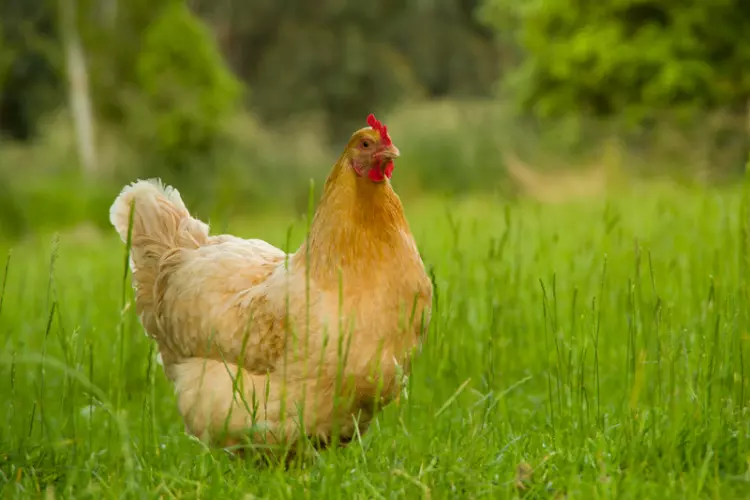
- Origin and History: Cochin chickens are a heavy and massively feathered breed that originated from China. They were specifically bred for shows and exhibitions.
- Physical Characteristics: Cochin hens weigh around 10 lb (4.5 kg), and roosters around 12 lb (5.5 kg). Their excessive plumage covers the body, legs, and feet.
- Temperament and Behavior: Cochins are friendly birds, ideal for backyard flocks and families with small children. They are quite passive and are happy in confinement. They aren’t very active during the day and are not fond of foraging.
- Egg Laying Capability: These giant chicken breeds aren’t the best egg layers, but they lay up to 2-3 large-sized brown eggs per week, totaling around 150 eggs per year. They easily go broody, which makes them excellent mothers.
- Health and Care Considerations: Due to their size, it can be challenging to pick them up. They’re pretty lazy chickens and aren’t active during the day.
- Best Practices for Raising This Breed: If you don’t want to free-range your chickens, Cochins are a great choice! They’re pretty lazy chickens, aren’t active during the day, and are not as fond of foraging as most birds. They’re happy in confinement.
12. Delaware

- Origin and History: The Delaware chicken, originally called the ‘Indian River’, is an American breed originating in (of course) Delaware. It’s a dual-purpose breed, primarily bred for meat, but it is also a good egg layer.
- Physical Characteristics: Delaware hens weigh around 6.6 lb (3 kg) and roosters around 8.8 lb (4 kg). They are not the largest chicken breeds on this list, but they are quite the big meat bird.
- Temperament and Behavior: These giant chicken breeds are excellent beginners breed, friendly, and easy to keep. They don’t need anything more than food, water, and shelter and are overall a healthy breed.
- Egg Laying Capability: Hens lay up to 200 large brown eggs per year. Being generally not broody, they’ll keep on laying all year round, except during molting.
- Health and Care Considerations: If you consider breeding with the Delaware chicken, you might need an incubator. Although they once were critically endangered, the Livestock Conservatory no longer has Delaware on the ‘endangered’ list, only on the ‘watch’ list.
- Best Practices for Raising This Breed: Delaware chickens are an excellent beginners breed, friendly, and easy to keep. They don’t need anything more than food, water, and shelter and are overall a healthy breed.
13. Java
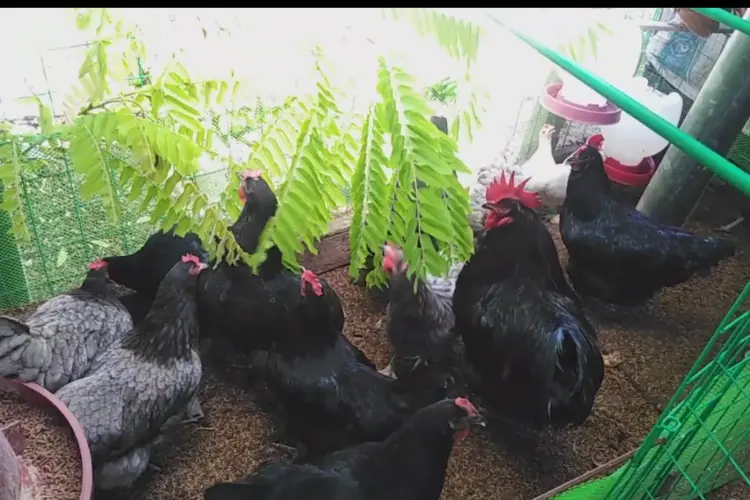
- Origin and History: Contrary to its name, the Java chicken originated in the United States and is not associated with Java Island, Indonesia. It is considered the second oldest American breed and was developed as a dual-purpose breed, intended for both meat and egg production.
- Physical Characteristics: Java hens have an average weight of 7.5 lb (3.4 kg), while roosters weigh around 9.5 lb (4.3 kg).
- Temperament and Behavior: Java chickens are known for their calm and docile temperament. They rarely display aggression and can be kept alongside other chicken breeds without issue. They have excellent foraging skills and are generally good at finding their own food. Javas are known to be good mothers and readily go broody, exhibiting strong maternal instincts. They continue laying eggs even as they age.
- Egg Laying Capability: Java hens have a moderate egg-laying capability, producing up to 180 large brown eggs per year. While their primary purpose is not egg production, they contribute to the flock’s egg supply. Their eggs are of a substantial size.
- Health and Care Considerations: These giant chicken breeds are generally hardy and adaptable to various weather conditions. They particularly thrive in cold weather. However, roosters with larger combs may be more susceptible to frostbite, so it’s important to provide appropriate shelter and protection. The Livestock Conservancy currently recognizes the Java chicken breed as being in a “critical” condition or a rare breed, highlighting the need for conservation efforts.
- Best Practices for Raising: Java chickens successfully provide them with a suitable living environment that offers protection from extreme weather conditions. Ensure they have ample space for foraging and exercise. As with all chickens, providing a balanced diet, fresh water, and routine care are essential for their well-being.
14. New Hampshire Red

- Origin and History: The New Hampshire Red is an American breed that was developed in the early 20th century in the state of New Hampshire. Through selective breeding with the Rhode Island Red, a bird was created with a focus on rapid growth and feathering.
- Physical Characteristics: New Hampshire Red hens have an average weight of 6.5 lb (3 kg), while roosters weigh around 8.5 lb (3.8 kg). There is also a bantam variety available, with hens weighing about 1.6 lb (0.7 kg) and roosters weighing approximately 2.3 lb (1 kg).
- Temperament and Behavior: New Hampshire Red birds are generally known to be docile and friendly. However, it’s worth noting that some strains may exhibit aggression, especially towards other chickens within the flock. Therefore, it is recommended not to place New Hampshire Reds with submissive breeds but rather opt for more assertive breeds like the Rhode Island Red or the Wyandotte.
- Egg Laying Capability: These giant chicken breeds are dual-purpose breed that can lay up to 220 large brown eggs per year. While they are good egg layers, they have a tendency to go broody easily. This means they may pause or stop laying eggs temporarily when they become broody and focus on incubating and hatching eggs. However, their broodiness also makes them excellent mothers.
- Health and Care Considerations: New Hampshire Reds, like other chicken breeds, require standard care and attention to maintain their health and well-being. Providing them with a balanced diet, clean water, and appropriate shelter is important. Regular health checks and addressing any specific breed-related concerns will contribute to their overall care.
- Best Practices for Raising: To successfully raise New Hampshire Reds, it is essential to create a suitable living environment for them. Ensure they have adequate space, proper nutrition, and access to nesting boxes for their broody tendencies. Carefully consider their temperament when choosing companion breeds and provide them with a harmonious flock dynamic.
15. Sussex
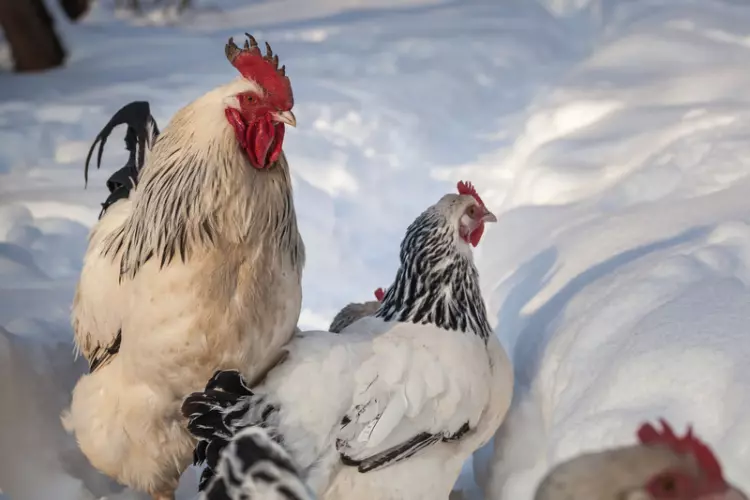
- Origin and History: The Sussex chicken is a British breed that originated in Sussex, South-East England. It is a dual-purpose breed, kept for both meat and eggs.
- Physical Characteristics: Sussex chickens are a large breed, characterized by their wide shoulders and broad body. Hens typically weigh around 8 lb (3.6 kg), while roosters weigh around 9 lb (4 kg). Bantam hens and roosters weigh around 2.3 lb (1 kg) and 3.3 lb (1.5 kg), respectively.
- Temperament and Behavior: The Sussex breed is neither assertive nor aggressive, so they may not be at the top of the pecking order. They coexist well with other kind and friendly breeds.
- Egg Laying Capability: An adult hen can lay up to 250 eggs per year. The eggs are tinted to brown in color and are large in size.
- Health and Care Considerations: These giant chicken breeds are cold hardy birds suited for colder climates. They struggle with warm temperatures, with the most pleasant temperature for them being around 75 degrees Fahrenheit (24°C) or below.
- Best Practices for Raising: The Sussex chickens quickly gain weight and fatten up, making them a suitable meat bird. They are kept for their eggs as well. When raising Sussex chickens, pair them with other kind and friendly breeds for a peaceful coop environment.
16. Wyandotte

- Origin and History: Wyandotte chickens are an American breed characterized by their wide-body structure. They are a dual-purpose breed and very beginner-friendly.
- Physical Characteristics: Hens typically weigh around 6.5 lb (3 kg), while roosters weigh around 8 lb (3.6 kg). Bantam hens and roosters weigh around 1.5 lb (0.7 kg) and 1.9 lb (0.9 kg), respectively.
- Temperament and Behavior: These giant chicken breeds are friendly and docile towards humans. However, they can be quite assertive towards other chickens, making them well-suited to cohabitation with other dominant breeds like the Rhode Island Red or Barred Rock.
- Egg Laying Capability: A Wyandotte hen lays around four large brown eggs per week, equating to more than 200 eggs per year. They continue laying during winter and only stop egg production when molting.
- Health and Care Considerations: Wyandottes are quite hardy chickens that do well in cold environments. Their small rose comb and fluffy body help them stand the cold.
- Best Practices for Raising: These chickens are a perfect dual-purpose breed. Hens tend to go broody quite easily, which is something to keep in mind if you are not planning to hatch eggs.
17. Niederrheiner

- Origin and History: The Niederrheiner is a German breed of meat chicken. It is recognized as an endangered breed by the ‘Gesellschaft zur Erhaltung alter und gefährdeter Haustierrassen,’ the German Association for the conservation of endangered domestic animals.
- Physical Characteristics: Niederrheiners have a weight of around 6.5 lb (3 kg) for hens and 8.8 lb (4 kg) for roosters. Bantam Niederrheiners weigh approximately 2.3 lb (1 kg) for hens and 2.6 lb (1.2 kg) for roosters.
- Temperament and Behavior: Niederrheiners are known for being docile and friendly. They enjoy the company of people and are generally easy to handle.
- Egg Laying Capability: While Niederrheiners are primarily bred as meat birds, hens of this breed can lay up to 200 light brown eggs per year. However, they are not particularly prone to going broody, so they may not be the best choice for hatching eggs.
- Health and Care Considerations: Niederrheiners are hardy birds that do not require much extra care beyond standard chicken care practices. They are generally healthy and have a docile temperament.
- Best Practices for Raising: To raise Niederrheiners successfully, provide them with adequate space inside the chicken run or allow them to free range. They are not prone to wandering far from home and will return at dusk. Additionally, ensure they have proper nutrition and a suitable living environment.
18. Faverolles

- Origin and History: Faverolles is a breed named after a northern French village. It is a crossbreed between multiple chicken breeds such as Brahma, French Rennes, and Flemish Cuckoo.
- Physical Characteristics: Faverolles are not the heaviest chicken breed but, the hens can weigh around 9 lb (4.1 kg) and roosters weigh around 11 lb (5 kg). Bantam Faverolles weigh approximately 1.5 lb (0.7 kg) for hens and 1.9 lb (0.9 kg) for roosters. They have distinctive fluffy plumage, including a beard, muffs, and feathered shanks and toes.
- Temperament and Behavior: These giant chicken breeds are famous for their friendly and docile nature. They are known for being excellent pet chickens and are loved for their calm and family-friendly demeanor. However, due to their friendly disposition, they may be susceptible to bullying and should not be kept with larger, more assertive breeds.
- Egg Laying Capability: Hens of the Faverolles breed can lay up to 200 light brown to pinkish eggs per year. The eggs are medium to large in size.
- Health and Care Considerations: Faverolles are generally easy to care for and are considered a beginner-friendly breed. They do not require any special care beyond standard chicken care practices.
- Best Practices for Raising: Faverolles are a relatively low-maintenance breed, making them ideal for beginners. Provide them with proper food, water, and shelter, and they will thrive. Their friendly nature and heavy size make them great companions in the backyard.
19. American Bresse
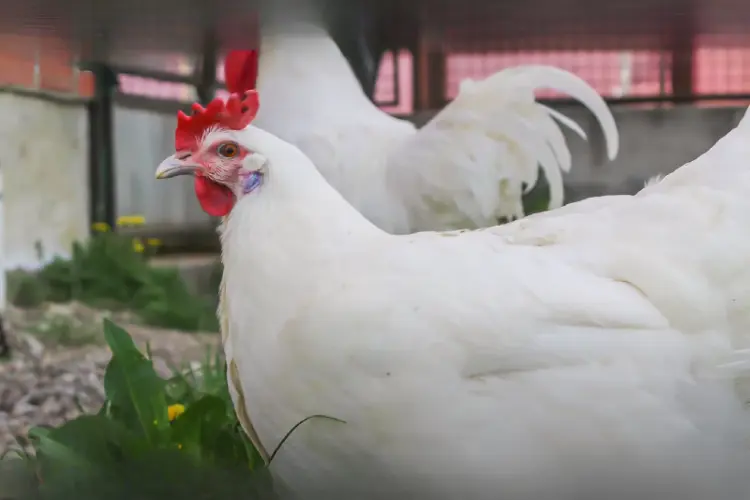
- Origin and History The American Bresse is a breed that was imported to the US and Canada in 2011. It originated directly from the French Bresse chicken, a registered trademark meat chicken produced in the village of Bresse in Eastern France. In the US, it is called ‘American Bresse’ for legal reasons, but it is virtually identical to the French Bresse.
- Physical Characteristics: American Bresse hens weigh around 5 lb (2.2 kg), while roosters weigh approximately 7 lb (3.1 kg).
- Temperament and Behavior: American Bresse chickens are known for their hardy and easygoing temperament. They are a family-friendly breed and have an easygoing nature, making them suitable for beginners.
- Egg Laying Capability: The American Bresse is a great egg layer, producing between 250 and 280 tinted eggs per year. They are known for their high-quality eggs.
- Health and Care Considerations: American Bresse chickens are hardy and easy to care for. They require standard chicken care practices and have good resilience to common chicken health issues.
- Best Practices for Raising: Raising American Bresse chickens is relatively straightforward. Provide them with proper nutrition, a suitable living environment, and they will thrive. They have excellent foraging skills and a friendly temperament.
20. Rhode Island Red

- Origin and History: The Rhode Island Red is an American breed of domestic chicken that has gained popularity among backyard chicken keepers. It was developed in Rhode Island, United States, in the late 19th century by crossing various breeds like Malay, Shanghai, and Red Malay.
- Physical Characteristics: Rhode Island Red hens have an average weight of 6.5 lb (3 kg), while roosters weigh around 8.5 lb (3.8 kg). Bantam Rhode Island Reds are smaller, with hens weighing approximately 1.8 lb (0.8 kg) and roosters weighing around 2.3 lb (1 kg). They appear large but are considered medium-sized chickens.
- Temperament and Behavior: Rhode Island Reds are known for their friendly and curious nature. They enjoy being around humans and can make excellent pet chickens. They are generally low-maintenance and beginner-friendly, rarely getting sick or requiring extra care. They are also weather-hardy, capable of thriving in both hot temperatures and heavy winters.
- Egg Laying Capability: Rhode Island Reds are exceptional egg layers. They can lay approximately five eggs per week, totaling over 250 eggs annually. Their eggs are large in size and always light brown in color. One of their notable traits is their ability to continue laying during the winter, although egg production may temporarily decrease due to the colder weather.
- Health and Care Considerations: Rhode Island Reds are generally hardy birds and do not require extensive care beyond standard chicken care practices. They have good resilience to common chicken health issues.
- Best Practices for Raising: To successfully raise these giant chicken breeds, provide them with proper nutrition, clean water, and a suitable living environment. They thrive in a variety of climates and are adaptable to both hot and cold conditions. Ensure they have adequate space to roam and exhibit their natural behaviors.
FAQ
What breed of chicken grows the largest?
The breed of chicken that grows the largest is the Jersey Giant. This giant chicken breed is quite big, with mature roosters weighing up to 13-15 pounds (5.9-6.8 kg), and hens typically weighing 10-12 pounds (4.5-5.4 kg).
Conclusion
The selection of the 20 best giant chicken breeds provides a diverse range of options for poultry enthusiasts looking to add impressive and unique birds to their collection. These breeds showcase a variety of origins, physical characteristics, temperaments, and egg-laying capabilities, allowing chicken keepers to find the perfect fit for their specific preferences and requirements.
Whether you are an experienced poultry keeper or a beginner taking your first steps into the world of chickens, our list of giant chicken breeds offers a fantastic opportunity to enhance your poultry collection and enjoy the beauty and benefits these impressive birds bring. So, explore the wonders of these giant breeds, and may your poultry collection flourish with these remarkable feathered giants.

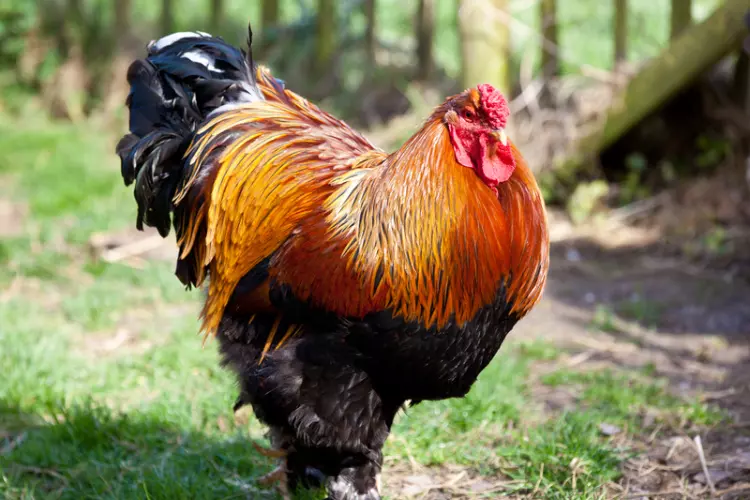
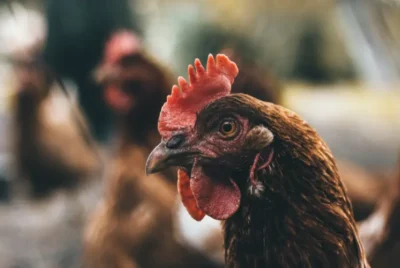

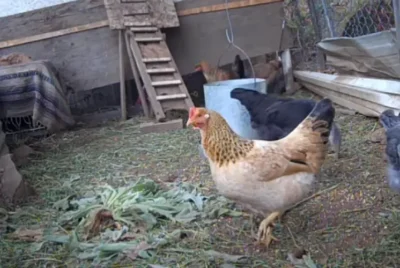
Comments are closed.